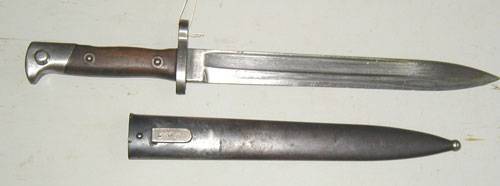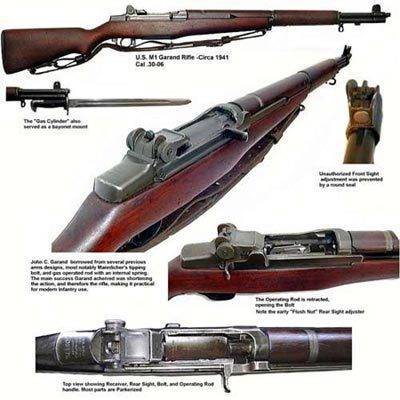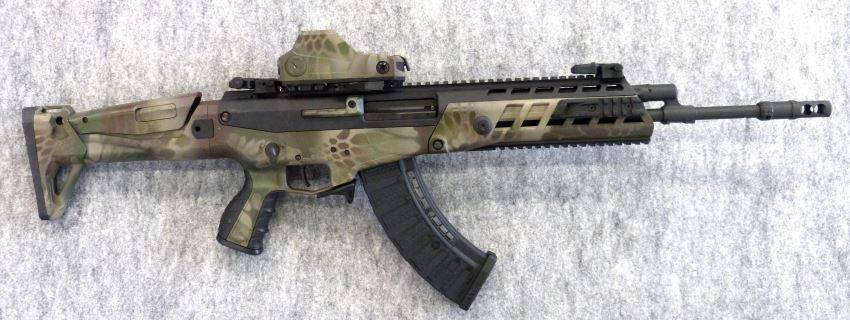Sequestered 8x50R Romanian Mannlicher Rifle Md.18938mm M.93 Adaptiertes Rumanisches Repetier Gewehr
 At the start of WW1 in 1914 Steyr was working on the last Romanian contract and their warehouse contained 75,000
At the start of WW1 in 1914 Steyr was working on the last Romanian contract and their warehouse contained 75,000
Md.1893 Mannlicher rifles. Many were only partially complete. The completed rifles were issued in their original 6.5x53R caliber under the designation ‘6.5mm M.93
Rumanisches Repetier Gewehr. A few incomplete rifles were assembled with 8x50R caliber (8mm M.1893 Scharfe Patrone) barrels, with the designation: ‘8mm
M.93 Adaptiertes Rumanisches Repetier Gewehr’. These barrels are marked with the standard Austrian acceptance mark W-n14 above the chamber
(hidden under the handguard). These 8x50R Wn-14 accepted rifles are extremely rare. The chamber-top Romanian crown was not applied to these rifles. The
handguard groove behind the rear sight is deeper on the 8×50 rifles than on the standrd 6.5mm ones.
 These rifles were assigned to the Austrian Landwehr, example unit marks: ’26.LR.271′, ‘3LR.870’, LR16.1085.
These rifles were assigned to the Austrian Landwehr, example unit marks: ’26.LR.271′, ‘3LR.870’, LR16.1085.
Please, contact the author on the home page if you know anything about the history of these units.
 The standard Romanian Md.1893 had a tangent leaf sight graduated 300-2100 meters. The rear sight of the converted
The standard Romanian Md.1893 had a tangent leaf sight graduated 300-2100 meters. The rear sight of the converted
rifles were the same style as the M.95 rifles and graduated 300-2600 schritt.


Many additional Md.1893 guns were captured in 1916 when the Austro-Hungary took over most of Romania. Some of the Monarchy re-issued rifles were unit
marked on the buttplate.
Some of the 8x50R Md.1893 rifles were captured by the Germans in Yugoslavia during WW2. The Germans referred to these rifles as “8mm Puschka M93/30
Rumanisches”. Assumably Serbo-Croatia received these rifles originally from Austria and Hungary after WW1 as war reparations. The Yugoslavian designation
was ‘Puska 8mm M93.’
Czechoslovakia too received a shipment of these 8x50r M93 guns as war reparations. Interestingly these weapons could have ended up in Romania when
the Czechs were disposing of all their 8x50R M95’s (before the Romanian VZ24 contract).
Several of these rare 8x50R Md.1893 rifles are in the collection of the Legermuseum in the Netherlands and several photographs on this webpage are from the courtesy of drs. Mathieu Willemsen, Conservator of the
Museum. The route of these rifles to the Netherlands is a mystery. The most likely route is that these were German captured rifles from Yugoslavia, which ended up
in the Netherlands during WW2. Another source might be interned Austro-Hungarian troops during/after WW1. Any info would be appreciated.
Home
Romanian Mannlicher Infantry Rifle Md.18936.5mm M.93 Rumanisches Infanterie RepetierGewehr

 195,000 Made by Цsterreichische Waffenfabriks-Gesellschaft, Steyr, 1893-1914
195,000 Made by Цsterreichische Waffenfabriks-Gesellschaft, Steyr, 1893-1914
120,000 rifles and 14,000 carbines were delivered to Romania
Turning-bolt action, with two lugs on a detachable bolthead locking into the receiver
Caliber: 6.5x53mm rimmed (some in 8x50mm rimmed – see 8×50 rifle below)
Muzzle velocity 731 m/sec with 6.5mm M1893 ball ammunition
 1227mm overall, 4.06kg , 725mm barrel, 4-groove rifling, RH, concentric
1227mm overall, 4.06kg , 725mm barrel, 4-groove rifling, RH, concentric
These Mannlicher type weapons were designed using lessons learned from the Gew.88 rifles. They had straight grip stocks and two
barrel bands. Receiver tops were marked Md.1893 beneath the Romanian crown. Stocks were marked with the full crest of Romania
 The hanguard ran from the receiver to the rear band, fastened to the barrel with two spring clips
The hanguard ran from the receiver to the rear band, fastened to the barrel with two spring clips
 The sling swivels were under the rear band and the butt edge
The sling swivels were under the rear band and the butt edge
 The front band was used as a nosecap and the bayonet lug was on the right side, the stacking hook was on the left side.
The front band was used as a nosecap and the bayonet lug was on the right side, the stacking hook was on the left side.
A half-length cleaning rod was located beneath the muzzle
 Integral clip-loaded box magazine, 5 rounds.
Integral clip-loaded box magazine, 5 rounds.
The lower sides of the magazine housing had unique reinforcing ribs, which makes these rifles easier to differentiate from other Mannlichers
Inspection marks on the receiver’s flat
 M1893 Knife Bayonet with 260mm long blade
M1893 Knife Bayonet with 260mm long blade The bayonets have Austrian ‘OEWG’ manufacturer’s marks, the Romanian eagle proof mark and Romanian unit
The bayonets have Austrian ‘OEWG’ manufacturer’s marks, the Romanian eagle proof mark and Romanian unit
markings.

























